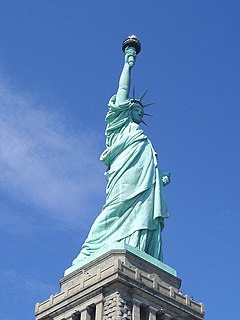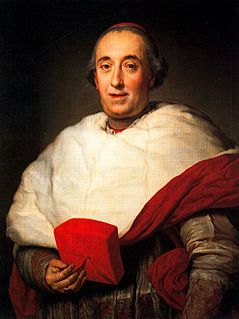
1793 (MDCCXCIII) was a common year starting on Tuesday of the Gregorian calendar and a common year starting on Saturday of the Julian calendar, the 1793rd year of the Common Era (CE) and Anno Domini (AD) designations, the 793rd year of the 2nd millennium, the 93rd year of the 18th century, and the 4th year of the 1790s decade. As of the start of 1793, the Gregorian calendar was 11 days ahead of the Julian calendar, which remained in localized use until 1923. The French Republic introduced the French Revolutionary Calendar starting with the year I.
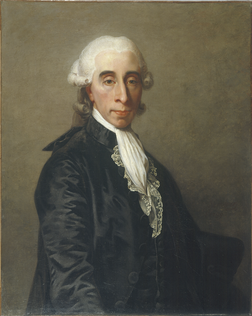
Jean Sylvain Bailly was a French astronomer, mathematician, freemason, and political leader of the early part of the French Revolution. He presided over the Tennis Court Oath, served as the mayor of Paris from 1789 to 1791, and was ultimately guillotined during the Reign of Terror.

The Concordat of 1801 was an agreement between Napoleon and Pope Pius VII, signed on 15 July 1801 in Paris. It remained in effect until 1905. It sought national reconciliation between revolutionaries and Catholics and solidified the Roman Catholic Church as the majority church of France, with most of its civil status restored. The hostility of devout French Catholics against the state had then largely been resolved. It did not restore the vast church lands and endowments that had been seized upon during the revolution and sold off. Catholic clergy returned from exile, or from hiding, and resumed their traditional positions in their traditional churches. Very few parishes continued to employ the priests who had accepted the Civil Constitution of the Clergy of the Revolutionary regime. While the Concordat restored much power to the papacy, the balance of church-state relations tilted firmly in Napoleon's favour. He selected the bishops and supervised church finances.
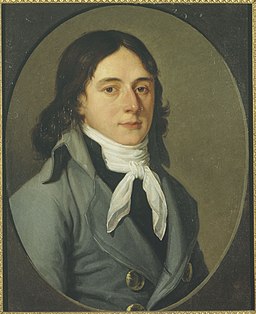
Lucie-Simplice-Camille-Benoît Desmoulins was a journalist and politician who played an important role in the French Revolution. He was a schoolmate of Maximilien Robespierre and a close friend and political ally of Georges Danton, who were influential figures in the French Revolution. Desmoulins was tried and executed alongside Danton when the Committee of Public Safety reacted against Dantonist opposition.

Jacques-Nicolas Billaud-Varenne, also known as Jean Nicolas, was a French personality of the Revolutionary period. Though not one of the most well known figures of the French Revolution, Jacques Nicolas Billaud-Varenne was an instrumental figure of the period known as the Reign of Terror. Billaud-Varenne climbed his way up the ladder of power during the period of The Terror, becoming one of the most militant members of the Committee of Public Safety. He was recognized and worked with French Revolution figures Georges Danton and Maximilien Robespierre, and is often considered one of the key architects of the period known as The Terror. "No, we will not step backward, our zeal will only be smothered in the tomb; either the Revolution will triumph or we will all die."

Adam Philippe, Comte de Custine was a French general. As a young officer in the Bourbon Royal army, he served in the Seven Years' War. In the American Revolutionary War he joined Rochambeau's Expédition Particulière supporting the American colonists. Following the successful Virginia campaign and the Battle of Yorktown, he returned to France and rejoined his unit in the Royal Army.

Jacques René Hébert was a French journalist, and the founder and editor of the extreme radical newspaper Le Père Duchesne during the French Revolution. He was a leader of the French Revolution and had thousands of followers as the Hébertists ; he himself is sometimes called Père Duchesne, after his newspaper.
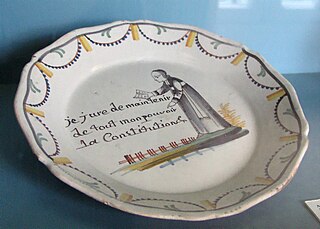
The Civil Constitution of the Clergy was a law passed on 12 July 1790 during the French Revolution, that caused the immediate subordination of the Catholic Church in France to the French government.

François-Joachim de Pierre de Bernis, comte de Lyonnais was a French cardinal and diplomat. He was the sixth member elected to occupy Seat 3 of the Académie française in 1744. Bernis was one of the most prominent figures in the autobiography of Giacomo Casanova Histoire de ma vie starting from the chapter on "Convent Affairs".

Jean-Baptiste du Val-de-Grâce, baron de Cloots, better known as Anacharsis Cloots, was a Prussian nobleman who was a significant figure in the French Revolution. Perhaps the first to theorize world government, he was also an anarchist. He was nicknamed "orator of mankind", "citoyen de l'humanité" and "a personal enemy of God".

Ercole Consalvi was a deacon and cardinal of the Catholic Church, who served twice as Cardinal Secretary of State for the Papal States and who played a crucial role in the post-Napoleonic reassertion of the legitimist principle of the divine right of kings, of which he was a constant supporter.

Arnaud d'Ossat was a French diplomat and writer, and a Cardinal of the Roman Catholic Church, whose personal tact and diplomatic skill steered the perilous course of French diplomacy with the papacy in the reign of Henry IV of France.

Giovanni Battista Caprara Montecuccoli was an Italian statesman and Cardinal and archbishop of Milan from 1802 to 1810. As a papal diplomat he served in the embassies in Cologne, Lausanne, and Vienna. As Legate of Pius VII in France, he implemented the Concordat of 1801, and negotiated with the Emperor Napoleon over the matter of appointments to the restored hierarchy in France. He crowned Napoleon as King of Italy in Milan in 1805.
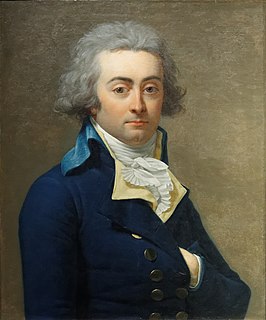
Marie-Jean Hérault de Séchelles was a French judge and politician who took part in the French Revolution.
The Treaty of Tolentino was a peace treaty between Revolutionary France and the Papal States, signed on 19 February 1797 and imposing terms of surrender on the Papal side. The signatories for France were the French Directory's Ambassador to the Holy See, François Cacault, and the rising General Napoleon Bonaparte and opposite them four representatives of Pius VI's Curia.
The massacres of La Glacière that took place during 16–17 October 1791 in the Tour de la Glacière of the Palais des Papes at Avignon, then recently united to France, were an isolated and early example of violence in the opening phase of the French Revolution; the massacres are interpreted by French historians not as presaging the September massacres of 1792 and the Reign of Terror but as a last episode in the struggle between partisans and advocates of the reunion of the papal enclave of Avignon and the Comtat Venaissin with the state of France.

Jean Lemoine, Jean Le Moine, Johannes Monachus was a French canon lawyer, Cardinal, bishop of Arras and papal legate. He served Boniface VIII as representative to Philip IV of France, and founded the Collège du Cardinal Le Moine, in Paris. He is the first one to formulate the legal principle of the presumption of innocence.
Louis-Siffren-Joseph Salamon was a French Bishop of Saint-Flour, and papal diplomat of the period of the French Revolution.
The modern history of the papacy is shaped by the two largest dispossessions of papal property in its history, stemming from the French and its spread to Europe, including Italy.
The Armistice of Bologna was a treaty signed between the Papal States and the French First Republic on 23 June 1796. It resulted in a ceasefire between the two parties that was intended to last until a permanent peace treaty could be signed. The terms of the armistice included the payment of 15 million livres in cash in addition to goods and works of art to the French and significant territorial reductions. A temporary Austrian victory against the French at the Siege of Mantua persuaded Pope Pius VI to renounce the armistice in September 1796. The French subsequently invaded the Papal States and enforced the terms of the armistice.







